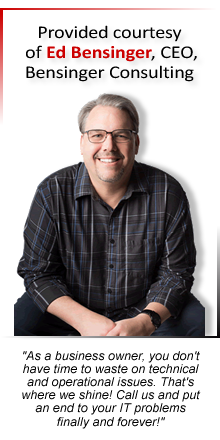
A "Culture Of Appreciation"
Improves Work And Customer Loyalty.
Here's How To Make Your Own
The desire to feel valued, recognized and appreciated is universal in Western culture, not only in our personal lives but also in the workplace. According to Great Place To Work’s 2023 discretionary effort study, 37% of respondents said that more recognition at work “would encourage them to produce better work more often.”
Additionally, employees who feel consistently recognized are 2.2X more likely to innovate and bring up new ideas and 2X more likely to say people at work go above and beyond. Working harder, smarter and happier – that’s a significant ROI. Similarly, customer appreciation drives loyalty, engagement and company growth.
A Forrester survey of 85,000 consumers found that the top three emotions that "inspire or discourage loyalty" among people are to feel valued, appreciated and respected.
Additionally, employees who feel consistently recognized are 2.2X more likely to innovate and bring up new ideas and 2X more likely to say people at work go above and beyond. Working harder, smarter and happier – that’s a significant ROI. Similarly, customer appreciation drives loyalty, engagement and company growth.
A Forrester survey of 85,000 consumers found that the top three emotions that "inspire or discourage loyalty" among people are to feel valued, appreciated and respected.
We can all agree that appreciation is important, but how you show it matters.
Appreciation isn’t a one-and-done event. (Sorry, but your annual Christmas party or Facebook customer appreciation post doesn’t cover it.) To reap the benefits of appreciation in your organization, you must weave it into company culture.
Tips To Create A Culture Of Appreciation
A culture of appreciation is about being consistent.
While significant events like anniversaries, birthdays and holidays are great opportunities to recognize and appreciate employees and customers, you need to do it in small ways throughout the year.
Appreciation isn’t a one-and-done event. (Sorry, but your annual Christmas party or Facebook customer appreciation post doesn’t cover it.) To reap the benefits of appreciation in your organization, you must weave it into company culture.
Tips To Create A Culture Of Appreciation
A culture of appreciation is about being consistent.
While significant events like anniversaries, birthdays and holidays are great opportunities to recognize and appreciate employees and customers, you need to do it in small ways throughout the year.
Continued on page 2
Continued from page 1
Here are a few important tips to help you create your own meaningful culture of appreciation:
Tips for meaningful employee appreciation and recognition
It’s important to note that there is a difference between appreciation and recognition. Appreciating an employee is to acknowledge their value as a person to your organization.
Recognition is related to performance and effort. Consider both when you are planning your acts of thanks:
• Find out what’s meaningful to them. Everyone has preferences for how they want to be appreciated. So ask! Food, a note, a personalized gift – there are many simple ways to show appreciation.
• Create more opportunities for recognition. You can’t see everything, so ask for submissions from your entire team and post the shout-outs on an office bulletin board or internal team e-mail.
• Be specific. Did they put in extra effort for the presentation? Are they always on time for team calls? Specific comments are more genuine.
• Don’t wait. Don’t recognize an employee for their work on a presentation a month after the conference. The sooner you say it, the more impact it will have.
• Align with the bigger vision. Recognize how employees contribute to your organization’s mission during team meetings. You could even offer to pay for a training course or industry conference to invest in their professional growth.
Here are a few important tips to help you create your own meaningful culture of appreciation:
Tips for meaningful employee appreciation and recognition
It’s important to note that there is a difference between appreciation and recognition. Appreciating an employee is to acknowledge their value as a person to your organization.
Recognition is related to performance and effort. Consider both when you are planning your acts of thanks:
• Find out what’s meaningful to them. Everyone has preferences for how they want to be appreciated. So ask! Food, a note, a personalized gift – there are many simple ways to show appreciation.
• Create more opportunities for recognition. You can’t see everything, so ask for submissions from your entire team and post the shout-outs on an office bulletin board or internal team e-mail.
• Be specific. Did they put in extra effort for the presentation? Are they always on time for team calls? Specific comments are more genuine.
• Don’t wait. Don’t recognize an employee for their work on a presentation a month after the conference. The sooner you say it, the more impact it will have.
• Align with the bigger vision. Recognize how employees contribute to your organization’s mission during team meetings. You could even offer to pay for a training course or industry conference to invest in their professional growth.
Appreciating Customers
In a study by the Rockefeller Corporation, 82% of customers will stop doing business with you if they feel they’re undervalued. Here are tips for creating a culture of customer appreciation in your organization:
• Personalize their experience. A handwritten thank-you note is meaningful to customers, but personalizing the customer experience can go even further. Figure out how they like to be reached (via e-mail or phone, for example) or set up marketing campaigns relevant to their unique preferences.
• Follow up. After a service or purchase, check in with your customer to ensure they’re happy. Pro-actively showing up and addressing questions or problems before customers get frustrated helps them feel valued and respected.
• Create loyalty programs. Programs (like Starbucks’ Rewards or REI’s co-op membership) where customers earn points for purchases or get discounts for loyalty milestones help express how important their business is to you, ensuring you keep getting it!
• Offer perks or gifts (especially when something goes wrong). Customers love getting perks on their birthdays, on holidays, as a surprise or to celebrate a significant purchase from you. But gifts like a free product, gift card or discounts are essential if there’s a problem. Once solved, gifts provide a way to recognize and rectify the inconvenience.
Infusing appreciation and recognition into your organization isn’t just a pleasant gesture – it’s a strategic move that yields tangible results like improved employee effort and innovation, stronger relationships and loyalty. Whether acknowledging an employee’s hard work or sending a personalized note to a customer, let’s make every interaction a testament to our appreciation and respect for them – not just this month, but all year-round.
"Infusing appreciation and recognition into your organization isn’t just a pleasant gesture – it’s a strategic move that yields tangible results like improved employee effort and innovation, stronger relationships and loyalty"
Get a FREE No Obligation, Security And Network Assessment!
Would you like a 2nd opinion about your IT Services, but don’t want your current IT company to know? Would you like discreet confirmation that your security services are really keeping you secure? And that your backups are really backing up?
Contact us for your FREE, No Obligation, Security And Network Assessment!
We will contact you prior to beginning our assessment. Nothing will be installed on your network. When we’re done, we’ll provide you with written documentation of our findings at NO OBLIGATION to you.
Would you like a 2nd opinion about your IT Services, but don’t want your current IT company to know? Would you like discreet confirmation that your security services are really keeping you secure? And that your backups are really backing up?
Contact us for your FREE, No Obligation, Security And Network Assessment!
We will contact you prior to beginning our assessment. Nothing will be installed on your network. When we’re done, we’ll provide you with written documentation of our findings at NO OBLIGATION to you.

GET WEEKLY CYBERSECURITY TIPS IN YOUR EMAIL!
VISIT BENSINGERCONSULTING.COM/TIPS/
Start January With A Champion’s Vision: Emmitt Smith’s Humble Advice For Success
When former NFL running back Emmitt Smith was six years old, he told his dad that one day he wanted to play for the Dallas Cowboys. "He said, ‘Son, life is gonna do some things, and you’re going to have to learn how to overcome,’" Smith recalls. He did overcome challenges, setbacks and mistakes in his career, lessons he took to heart. By embracing humility, accountability and passion for the process, he didn’t simply succeed – he became legendary. After 15 seasons in the NFL, and holding the record for leading rusher, Smith won season three of the hit show Dancing With The Stars and is today a successful real-estate entrepreneur.
Though his accomplishments may feel like the stuff of dreams to us, his advice remains remarkably grounded. January is often when we contemplate our goals and visions, whether in business or personal endeavors. By embracing Smith’s advice, we can realize our own meaningful aspirations.
Hold Yourself Accountable
Smith has had many coaches, teammates and other entrepreneurs challenge him in his career, and they’ve played a critical role in holding him accountable

Though his accomplishments may feel like the stuff of dreams to us, his advice remains remarkably grounded. January is often when we contemplate our goals and visions, whether in business or personal endeavors. By embracing Smith’s advice, we can realize our own meaningful aspirations.
Hold Yourself Accountable
Smith has had many coaches, teammates and other entrepreneurs challenge him in his career, and they’ve played a critical role in holding him accountable

both as an individual and as part of a team.
"Who made the most mistakes and who did not? What marketing plan is working, which one is not, who’s not communicating upstream or downstream? All these things are important to the level of success you’re trying to get to," Smith explains. Accountability helps you improve, especially if you surround yourself with people who are more experienced. "It’s a beautiful thing to have wisdom… Some of your accountability partners have a little bit more experience than you do, so never be afraid to ask and seek guidance and help."
You Do Not Become Successful By Yourself
"I could not have become the all-time leading rusher without the Great Wall of Dallas in front of me," Smith says. It takes everybody to succeed in every organization; nobody can shoulder all the weight by themselves. The people who are not the most recognizable in the organization are often the ones who are doing a lot of the grunt work behind the scenes to make you look good. "Success is there to be shared. Not reserved for just you. It’s enjoyable when you have others to share it with," Smith says.
Be In It For The Process
People often ask Smith how he became an all-time leading rusher. “Well, you got to be consistent. So, you can’t be missing work. There aren’t any shortcuts in life,” he says. Fulfilling a vision is about taking small steps consistently so actions become habits and habits become sustainable routines.
"At the end of the day, when you get done, you will look up and you will look back on your journey. And you will see the process. And the things you put in to become successful work out for your good."
"Who made the most mistakes and who did not? What marketing plan is working, which one is not, who’s not communicating upstream or downstream? All these things are important to the level of success you’re trying to get to," Smith explains. Accountability helps you improve, especially if you surround yourself with people who are more experienced. "It’s a beautiful thing to have wisdom… Some of your accountability partners have a little bit more experience than you do, so never be afraid to ask and seek guidance and help."
You Do Not Become Successful By Yourself
"I could not have become the all-time leading rusher without the Great Wall of Dallas in front of me," Smith says. It takes everybody to succeed in every organization; nobody can shoulder all the weight by themselves. The people who are not the most recognizable in the organization are often the ones who are doing a lot of the grunt work behind the scenes to make you look good. "Success is there to be shared. Not reserved for just you. It’s enjoyable when you have others to share it with," Smith says.
Be In It For The Process
People often ask Smith how he became an all-time leading rusher. “Well, you got to be consistent. So, you can’t be missing work. There aren’t any shortcuts in life,” he says. Fulfilling a vision is about taking small steps consistently so actions become habits and habits become sustainable routines.
"At the end of the day, when you get done, you will look up and you will look back on your journey. And you will see the process. And the things you put in to become successful work out for your good."
Dr. Geoff Smart is the chairman and founder of ghSMART, a leadership consulting firm that exists to help leaders amplify their positive impact on the world.
Dr. Smart and his firm have published multiple New York Times best sellers. He stays active in his community and has advised many government officials.

GET WEEKLY CYBERSECURITY TIPS IN YOUR EMAIL!
VISIT BENSINGERCONSULTING.COM/TIPS/
Passkeys: The Beginning Of The End Of Passwords
In May, Google began rolling out passkeys, calling them “the beginning of the end of the password.” Passwords have been with us since the mid-1960s,
decades before computers became mainstream. But with more sophisticated cybercrime attacks, dated password technology does us more harm than good.
According to a survey by AllAboutCookies, 84% of people still use unsafe passwords (like birthdays and pet names), and over half of survey respondents admitted having five or fewer passwords for all their accounts. Sure, we could do better. But these stats are also a testament to how annoying and ineffective passwords are. Google and other major players in the industry believe that passkeys are the "key" to a simpler – and safer – future.
What Is A Passkey?
Instead of relying on something you remember (like a password), digital
According to a survey by AllAboutCookies, 84% of people still use unsafe passwords (like birthdays and pet names), and over half of survey respondents admitted having five or fewer passwords for all their accounts. Sure, we could do better. But these stats are also a testament to how annoying and ineffective passwords are. Google and other major players in the industry believe that passkeys are the "key" to a simpler – and safer – future.
What Is A Passkey?
Instead of relying on something you remember (like a password), digital
passkeys rely on something you have (like a device) or something you are (like a fingerprint or face recognition) for secure authentication.
Here’s How Passkeys Work
Passkeys use public-key cryptography. This is how it works: Your device has a pair of keys, a public key and a private key. The public key is shared with whatever website or app you want to access. The private key is stored securely on your device ONLY. When you try to sign into a site, the site sends your device a digital "challenge" to check if it’s really you. The website uses your public key to send a challenge back to your device.
Your device then uses the private key stored on it to decrypt and read the challenge - think of it like a decoder ring. The challenge confirms who the user is and sends a message back to the application.
Here’s How Passkeys Work
Passkeys use public-key cryptography. This is how it works: Your device has a pair of keys, a public key and a private key. The public key is shared with whatever website or app you want to access. The private key is stored securely on your device ONLY. When you try to sign into a site, the site sends your device a digital "challenge" to check if it’s really you. The website uses your public key to send a challenge back to your device.
Your device then uses the private key stored on it to decrypt and read the challenge - think of it like a decoder ring. The challenge confirms who the user is and sends a message back to the application.
If the authentication is successful – i.e., the keys match – the website knows the response truly came from your device. It’s like a secret handshake between your devices and the sites you use. This way, a hacker cannot log into your accounts without the private key from your device. This provides an added layer of security compared to passwords.
Why Passkeys Are Better
If you use a passkey, a hacker must have your device (and be logged in), fingerprint or face to log in. Also, passkeys are encrypted on your device instead of on servers, so even if your company’s data is breached, they can’t access your passkey. Though companies like Google, Apple and Microsoft are already using passkeys, it will take time for other sites and companies to get on board. Continue to use strong, secure passwords in the meantime and store them in a password manager.
Why Passkeys Are Better
If you use a passkey, a hacker must have your device (and be logged in), fingerprint or face to log in. Also, passkeys are encrypted on your device instead of on servers, so even if your company’s data is breached, they can’t access your passkey. Though companies like Google, Apple and Microsoft are already using passkeys, it will take time for other sites and companies to get on board. Continue to use strong, secure passwords in the meantime and store them in a password manager.







